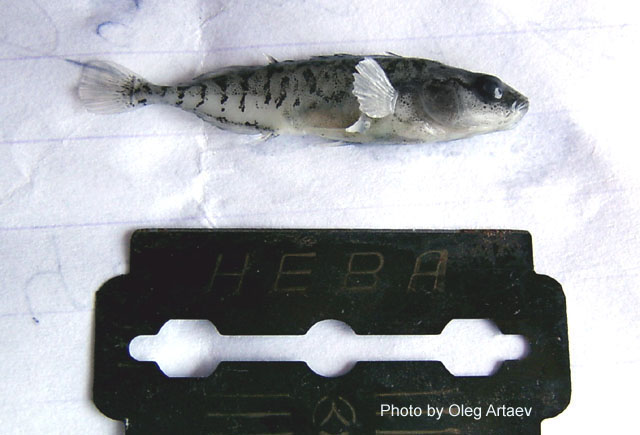| Gasterosteidae (Sticklebacks and tubesnouts) |
| 6 cm SL (male/unsexed) |
|
benthopelagic; freshwater; brackish; marine |
| Europe and Asia: Lower courses of rivers draining to northern shore of Black, Caspian and Aral Sea basins, Danube drainage as far upstream as Belgrade; isolated populations in Axios and Aliakmon drainages (Greece); upper Tobol system (Ob drainage), Lake Issyk-kul basin (Kyrgyzstan) and Sarysu drainage (central Kazakhstan). |
|
Dorsal spines (total): 8-11. Distinguished uniquely from its congeners in Europe by having large lateral scutes. Differs further from other members of the genus by the combination of the following characters: side of caudal peduncle without keel; and dorsal fin with 8-11 spines (Ref. 59043). |
| Occurs in fresh, brackish and marine waters (Ref. 58342). Inhabits swamps and slow-flowing streams with dense vegetation. Feeds on benthic invertebrates. Territorial during spawning season. Males construct a nest and guard the nest until the young swim away a few weeks later. Attain first sexual maturity at 1 year of age (Ref. 59043). |
|
Least Concern (LC); Date assessed: 01 January 2008 Ref. (130435)
|
| harmless |
Source and more info: www.fishbase.org. For personal, classroom, and other internal use only. Not for publication.

